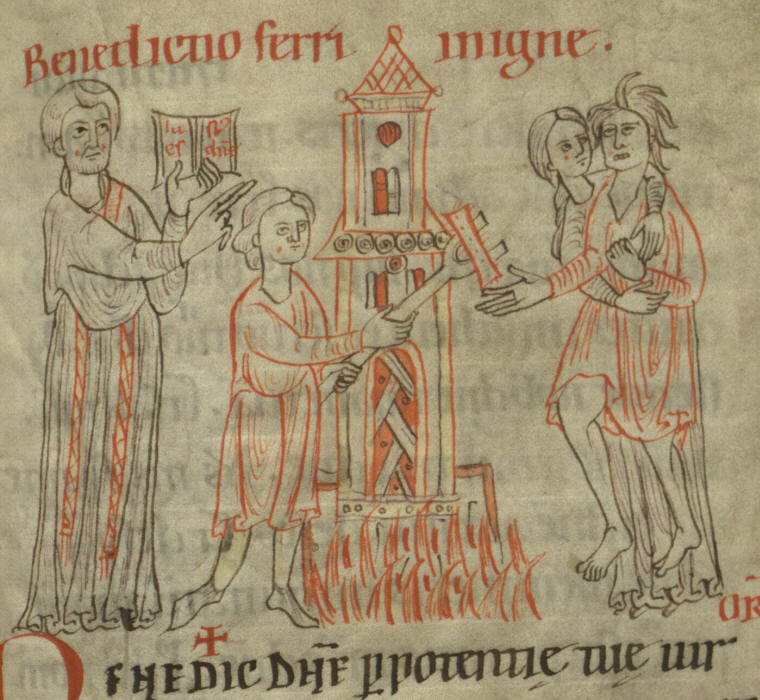
Lambach, Stiftsbibliothek LXXIII, fol. 72r
At the beginning of the twelfth century, the ordeal was a wide spread method of proof. During the course of the century the Ordo iudiciarius was substituted for the ordeal in ecclesiastical courts and also in secular courts, especially in Southern Europe. The rules governing this procedure were cobbled together by jurists and were taken primarily from Roman law.
The change in procedure from the ordeal to modes of proof based on testimony with a judge presiding over the proceedings was unsettling and disconcerting for society and for the courts.
Contrary opinion to Pennington's:
Robert Bartlett, Trial by Fire and Water: The Medieval Judicial Ordeal (Oxford: Clarendon Press, 1986) 42: "It <i.e. scholarly opinion> presumes that, if the ordeal disappeared from Europe in the thirteenth century, there must have been prior social changes which explain it <and> . . . then the ordeal must have been in decline in the twelfth century. These presumptions do not, however, match the facts."